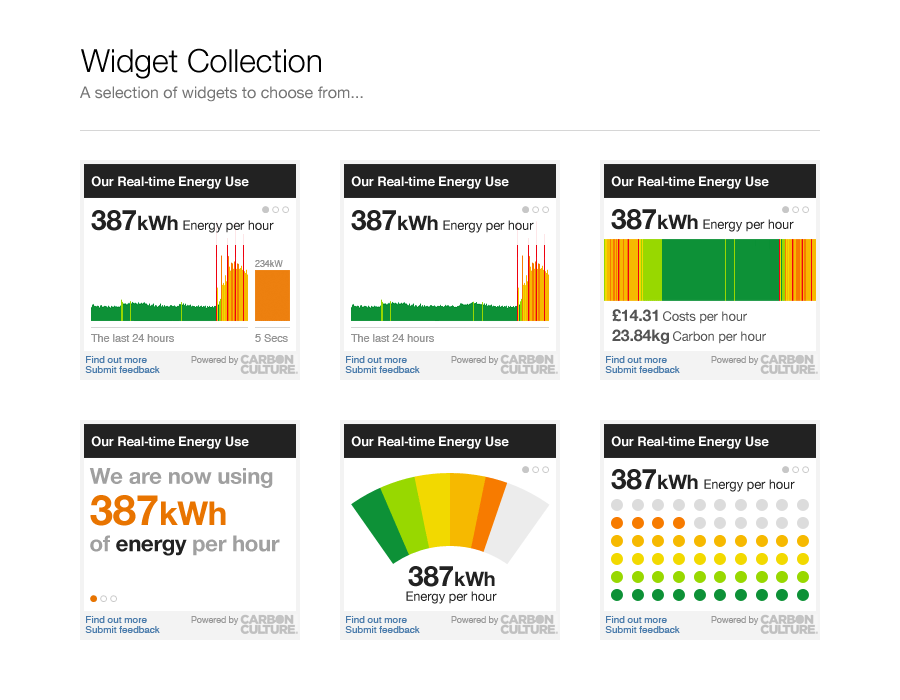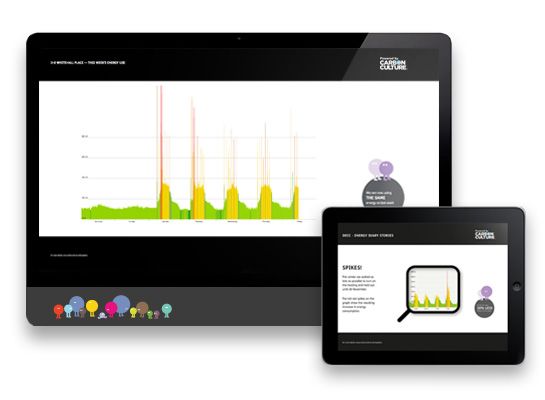CC Displays
CC Displays are a family of energy visualisations designed to help a wide range of people – people with different interests, knowledge and priorities – to understand and communicate about energy and energy saving processes.
Users will normally first encounter one of a collection of 'teaser' widgets displayed on a corporate or institutional webpage - designed to prompt curiosity and encourage exploration.
Some of these displays used animated movement to render the relationship between power and energy consumption from real-time data as it refreshed every few seconds.

Variants of the displays run on 'glanceable' screens, set up in public areas - the lobbies of companies and institutions, and across universities. These screens have also been installed in schools and libraries by local authorities.

There are also detailed versions of the displays designed to run as part of purpose-built online engagement tools, that allow users to drill into information, travel forwards or backwards in time, or filter the the display to highlight energy from a particular fuel.

This family of visualisations has been used to effectively open up conversations between experts and non-experts – both offline through engagement processes and online through an integrated feedback facility for staff and members of the public.
Particular answers to questions were then posted with next to a view of the graph explaining the answer with a visual context. Variations of the displays can be presented together with 'stories' that explain what happens at particular moments in the profile.

These visualisations were used by organisations including DECC, 10 Downing St, The Greater London Authority, UK Parliament, Cardiff Council and Jaguar Land Rover.
The CarbonCulture team developed a range of effective ways of using data visualisations and messaging to support engagement in, and conversations around energy. These displays enabled technical insights and user behaviour change that led directly to substantial real-world energy and carbon savings.